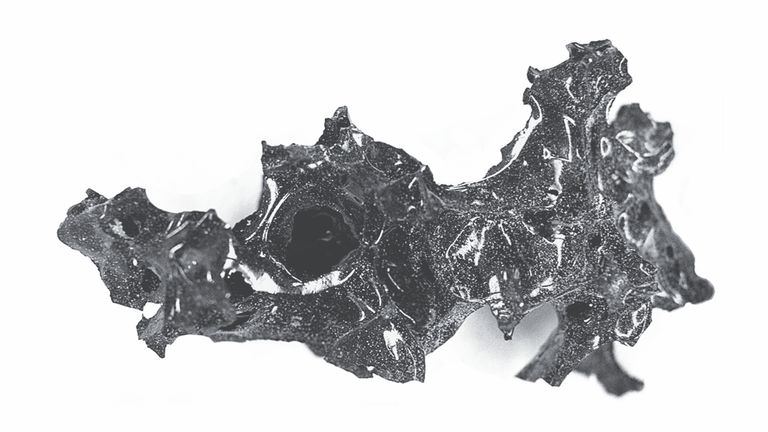Ancient Vesuvius eruption 'turned victim's brain into glass'
The man's brain was vitrified, scientists say, meaning it was burned at an intense heat after the volcano erupted in 79 AD.
Thursday 23 January 2020 20:26, UK
The brain of a man killed in the eruption of Mount Vesuvius in 79 AD burned at such a high temperature that it turned into glass, scientists have said.
Fragments of a shiny black material that turned out to be glass were found within remnants of the victim's skull.
Analysis of charred wood nearby indicated a maximum temperature of 520C (968F).
A study published in the New England Journal of Medicine said that such "extreme radiant heat was able to ignite body fat and vaporise soft tissue".
The flash of extreme heat was followed by a rapid drop in temperatures which completed the vitrification process, the authors added.
It is said to be the first time the phenomenon has been verified following a volcanic eruption.
Archaeologists do not often recover human brain tissue, and when they do it is generally smooth and soapy, the article said.
The ancient eruption killed the inhabitants of Pompeii and neighbouring Herculaneum, sending stones, ash and volcanic gases up to 21 miles in the air and killing more than 1,000 people.
The man was found lying in a wooden bed and is believed to have been the custodian of a place of worship, the Collegium Augustalium.
His remains were discovered at Herculaneum, which is closer to Vesuvius than Pompeii, in the 1960s.
A solidified spongy mass found in his chest bones is said to be unique among other archaeological sites.
The article said it could be compared to the victims of more recent historic events such as the firebombing of Dresden and Hamburg during World War II.




